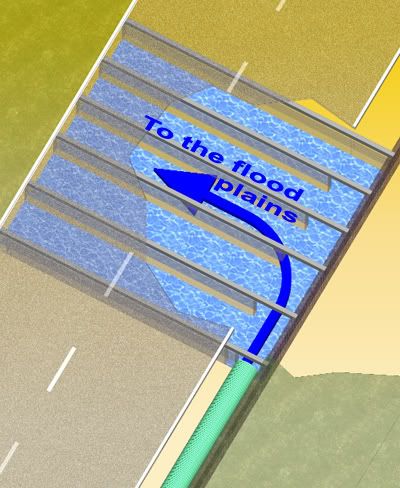I'll try to describe the situation as best as I can.
I have to bridge a 7 ft-wide x 36 ft-long (2m x 11m) strip on the side of an existing culvert for truck traffic (no more than 22 Kips. per wheel). Fig. 1a shows how things look now and Fig. 1b shows how the projected lateral access will be.
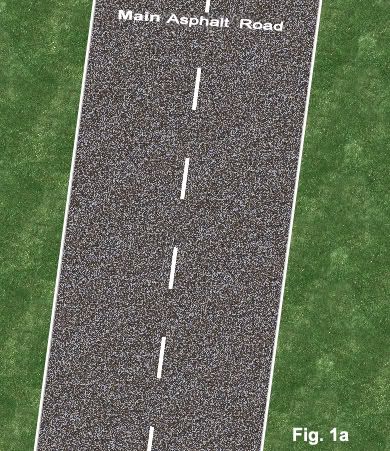
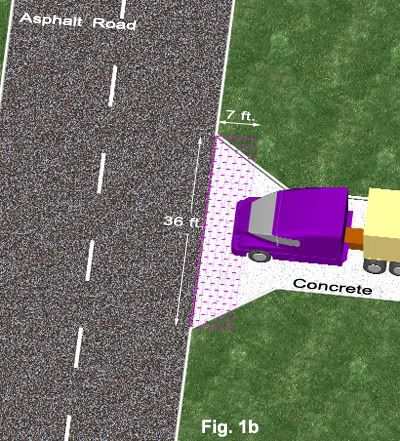
On the 7 x 36 ft area, just under the grass, there are half a dozen concrete beams B1..B6 which will be removed, or more likely abandoned in place, as they're severely spalled and the rebar completely decayed (Fig. 2).
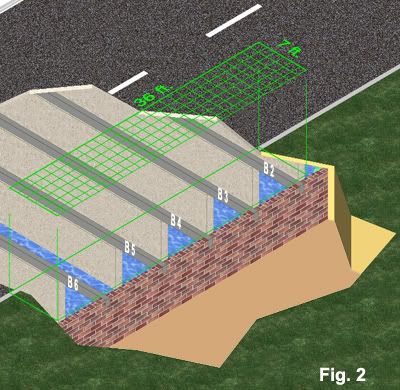
They will be replaced by steel I-Beams spaced 3 ft. apart from one another. The idea is to anchor the I-Beams to the existing concrete structure of the culvert on one end and to the masonry wall on the other end. Then a 6" concrete slab will be poured over I-Beams. (Fig. 3). Considering this slab will have to resist heavy loads from trucks (Fig. 4) I have thought of reinforcing it with wire mesh mats on the bottom and top sides (Fig. 5).
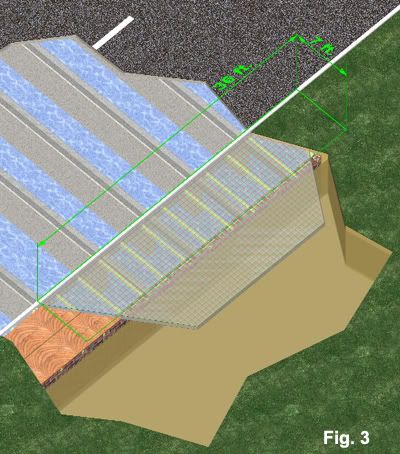
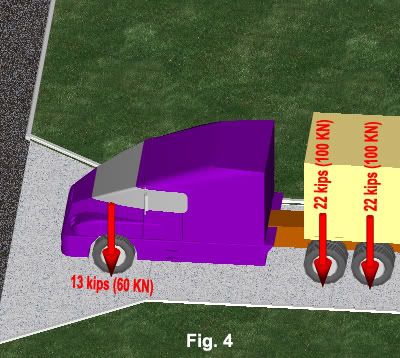
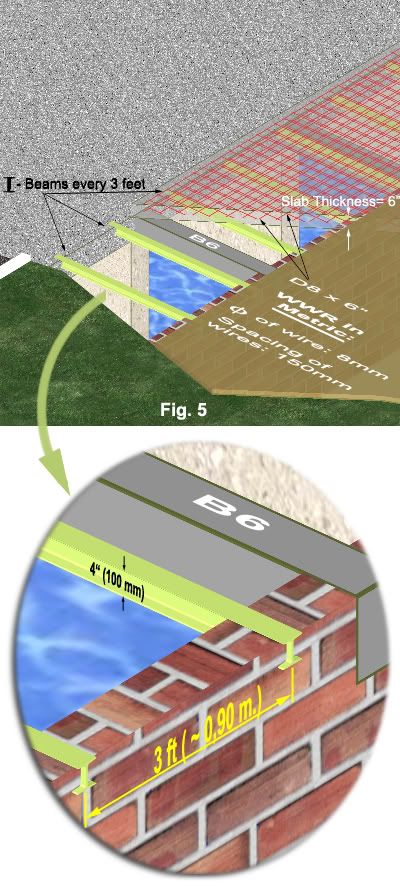
I'm interested in the study of the 7 x 36 ft. strip only. The rest of the pavement that sits on the ground to the right of the masonry wall is not a concern at all.
Now my questions:
Will this work? Is it going to resist this kind of traffic? Should punching shear be a concern? Is the slab properly reinforced with one wire mesh mat on each face of the slab? Is there anything that I have overlooked and should be changed? How would the slab fail?
Thanks.
I have to bridge a 7 ft-wide x 36 ft-long (2m x 11m) strip on the side of an existing culvert for truck traffic (no more than 22 Kips. per wheel). Fig. 1a shows how things look now and Fig. 1b shows how the projected lateral access will be.


On the 7 x 36 ft area, just under the grass, there are half a dozen concrete beams B1..B6 which will be removed, or more likely abandoned in place, as they're severely spalled and the rebar completely decayed (Fig. 2).

They will be replaced by steel I-Beams spaced 3 ft. apart from one another. The idea is to anchor the I-Beams to the existing concrete structure of the culvert on one end and to the masonry wall on the other end. Then a 6" concrete slab will be poured over I-Beams. (Fig. 3). Considering this slab will have to resist heavy loads from trucks (Fig. 4) I have thought of reinforcing it with wire mesh mats on the bottom and top sides (Fig. 5).



I'm interested in the study of the 7 x 36 ft. strip only. The rest of the pavement that sits on the ground to the right of the masonry wall is not a concern at all.
Now my questions:
Will this work? Is it going to resist this kind of traffic? Should punching shear be a concern? Is the slab properly reinforced with one wire mesh mat on each face of the slab? Is there anything that I have overlooked and should be changed? How would the slab fail?
Thanks.

![[idea] [idea] [idea]](/data/assets/smilies/idea.gif)
![[r2d2] [r2d2] [r2d2]](/data/assets/smilies/r2d2.gif)
